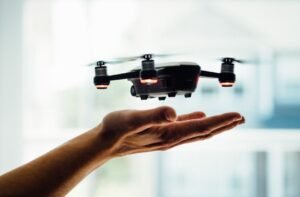Natural Language Processing vs Speech Recognition
Natural Language Processing (NLP) and Speech Recognition (SR) are both branches of Artificial Intelligence (AI) that revolve around the interaction between computers and human language. While they might seem similar, they serve different purposes and utilize different technologies.
Key Takeaways:
- Natural Language Processing (NLP) processes and analyzes human language text, whereas Speech Recognition (SR) focuses on converting spoken language into written text.
- NLP requires understanding the context, meaning, and sentiment in written text, while SR relies on recognizing and transcribing spoken words.
- NLP is widely used in applications such as chatbots, sentiment analysis, and language translation, while SR powers voice assistants, transcription services, and voice-controlled systems.
Natural Language Processing involves the use of algorithms and computational linguistics to understand and derive meaning from human language in written form. It goes beyond simple word matching and analyzes the entire text, considering grammar, syntax, and context to extract valuable insights. *NLP allows computers to understand and interpret the intricate nuances of human language, leading to more accurate and context-aware responses.*
NLP can be applied in various ways, including:
- Chatbots: NLP enables chatbots to comprehend and respond to user queries or requests, enhancing the overall user experience.
- Sentiment Analysis: By analyzing text, NLP can determine the sentiment or emotional tone of a piece of text, which is valuable for market research, social media monitoring, and customer feedback analysis.
- Language Translation: NLP makes it possible to automatically translate text from one language to another, facilitating communication across different languages.
Natural Language Processing vs Speech Recognition
Speech Recognition revolves around converting spoken language into written text. It relies on acoustic and language models to recognize and transcribe spoken words accurately. *SR enables hands-free interaction with devices and has revolutionized the way we interact with technology.*
SR has a wide range of applications, including:
- Voice Assistants: SR powers voice-controlled virtual assistants like Siri, Google Assistant, or Alexa, allowing users to perform tasks by simply speaking commands.
- Transcription Services: SR can be used to automatically transcribe audio recordings into written form, saving time and effort in manually transcribing meetings, interviews, or lectures.
- Voice-Controlled Systems: SR enables controlling devices or systems with voice commands, such as smart home automation, voice-activated car infotainment systems, or voice dialing in smartphones.
Comparing Natural Language Processing and Speech Recognition
| Natural Language Processing | Speech Recognition | |
|---|---|---|
| Input | Written text | Spoken language |
| Output | Understanding, context, sentiment analysis, translation | Transcription into written form |
| Applications | Chatbots, sentiment analysis, language translation | Voice assistants, transcription services, voice-controlled systems |
The table above summarizes the key differences between NLP and SR in terms of input, output, and applications.
The Future of NLP and SR
Natural Language Processing and Speech Recognition are rapidly evolving fields with numerous advancements being made. As technology continues to improve, we can expect to see:
- Enhanced Accuracy: Both NLP and SR will become increasingly accurate in understanding and transcribing human language, thanks to improved algorithms and deeper learning.
- Increased Personalization: NLP and SR will provide more personalized experiences by understanding individual users’ unique preferences, habits, and context.
- Better Multilingual Capabilities: NLP and SR will continue to advance in handling multiple languages and dialects efficiently, enabling effective communication across borders.
While NLP and SR have their own specific use cases, they also complement each other in various applications. Their continuous development will undoubtedly shape the future of human-computer interaction and enable more natural and intuitive interactions with technology.
| Natural Language Processing (NLP) | Speech Recognition (SR) |
|---|---|
| NLP analyzes written text. | SR converts spoken language into written form. |
| NLP focuses on context and meaning. | SR emphasizes word recognition and transcription. |
The table above provides a quick overview of the main differences between NLP and SR.

Common Misconceptions
Natural Language Processing (NLP) vs Speech Recognition
There are several common misconceptions that people often have when it comes to Natural Language Processing (NLP) and Speech Recognition. It is important to understand the differences between these two technologies in order to dispel these myths.
- NLP and Speech Recognition are the same thing.
- NLP can perfectly understand any spoken language without errors.
- Speech Recognition can translate spoken words into written text accurately without any human intervention.
NLP and Speech Recognition both involve the understanding of human language, but they are not the same thing. NLP focuses on the processing and analysis of language, while Speech Recognition is specifically designed to convert spoken words into written text. While NLP can be used in Speech Recognition systems to improve accuracy and understand the meaning behind the spoken words, they are different technologies with different goals.
- NLP analyzes the meaning and intent of text, while Speech Recognition transcribes spoken words into text.
- NLP can be used in various applications such as chatbots, sentiment analysis, or automatic summarization.
- Speech Recognition technology is commonly used in voice assistants, transcription services, and voice-controlled devices.
Another misconception is that NLP can perfectly understand any spoken language without errors. While NLP has made significant advancements in understanding human language, there are still limitations. Different languages have their own complexities, nuances, and cultural references that can be challenging for NLP systems to comprehend accurately. It is important to consider the language-specific challenges when implementing NLP solutions.
- NLP has greater accuracy in languages with more linguistic resources and datasets.
- Some languages may require language-specific models and training data to achieve optimal results.
- Cultural and regional variations in languages can also pose challenges for NLP systems.
Lastly, there is a misconception that Speech Recognition can translate spoken words into written text accurately without any human intervention. While Speech Recognition technology has made significant progress, it is not flawless. Factors such as background noise, accents, and speaking styles can impact the accuracy of speech recognition systems. Human intervention is often required to correct errors and improve the quality of the transcriptions.
- Speech Recognition can have lower accuracy in noisy environments or with heavy accents.
- Training a Speech Recognition system with specific accents or dialects can improve accuracy for those particular speech patterns.
- Human proofreading and correction is often necessary to ensure accurate transcriptions.

Introduction
Natural language processing (NLP) and speech recognition are two cutting-edge technologies that have revolutionized the way we interact with computers. NLP focuses on understanding, analyzing, and generating human language, while speech recognition enables computers to understand spoken language. Both technologies have unique applications and play vital roles in various fields, including virtual assistants, transcription services, and language translation. In this article, we will delve into the differences and similarities between NLP and speech recognition through a series of intriguing tables.
Table: NLP vs Speech Recognition Features
Let’s begin by exploring the distinguishing features of NLP and speech recognition:
| NLP | Speech Recognition |
|---|---|
| Focuses on written language | Focuses on spoken language |
| Uses algorithms to analyze syntax and semantics | Converts audio input into text |
| Enables language translation | Enables transcription services |
Table: Applications of NLP and Speech Recognition
Now, let’s explore the diverse applications where NLP and speech recognition find utility:
| NLP | Speech Recognition |
|---|---|
| Virtual assistants like chatbots | Voice-controlled devices |
| Information retrieval systems | Automated call center systems |
| Text summarization | Dictation software |
Table: Challenges and Limitations
However, both NLP and speech recognition face their fair share of challenges and limitations. Let’s take a closer look:
| NLP | Speech Recognition |
|---|---|
| Parsing ambiguous language | Accents and regional dialects |
| Sarcasm and irony detection | Noise interference |
| Understanding context and emotions | Speaker identification |
Table: Industries Leveraging NLP and Speech Recognition
These technologies have made a significant impact across a wide range of industries:
| NLP | Speech Recognition |
|---|---|
| Healthcare | Automotive |
| Finance | E-commerce |
| Legal | Telecommunications |
Table: Major Players in NLP and Speech Recognition
Various companies and institutions are at the forefront of advancing NLP and speech recognition:
| NLP | Speech Recognition |
|---|---|
| Amazon | |
| Microsoft | Apple |
| OpenAI | IBM |
Table: NLP and Speech Recognition Breakthroughs
Both NLP and speech recognition have witnessed remarkable breakthroughs in recent years:
| NLP | Speech Recognition |
|---|---|
| BERT – Bidirectional Encoder Representations from Transformers | DeepSpeech – Mozilla’s open-source speech recognition engine |
| GPT-3 – Generative Pre-trained Transformer 3 | Wavenet – DeepMind’s text-to-speech system |
| ELMo – Embeddings from Language Models | Alexa – Amazon’s popular virtual assistant |
Table: Future Prospects
As these technologies continue to evolve, their future prospects open up new possibilities:
| NLP | Speech Recognition |
|---|---|
| Human-like conversation agents | Accurate real-time translation |
| Emotionally intelligent systems | Improved voice-enabled IoT devices |
| Advanced sentiment analysis | Robust voice authentication |
Conclusion
Natural language processing and speech recognition are cutting-edge technologies that have transformed the way we communicate with computers. While NLP focuses on written language and employs algorithms to analyze and generate human language, speech recognition deals with spoken language and converts it to text. Both technologies find applications in fields such as virtual assistants, transcription services, and language translation. Despite challenges like parsing ambiguous language and noise interference, they have made significant strides and are being leveraged across various industries. With breakthroughs like BERT and DeepSpeech, as well as future prospects like emotionally intelligent systems and accurate real-time translation, the future of NLP and speech recognition holds immense promise.
Frequently Asked Questions
Question 1
What is Natural Language Processing (NLP)?
Question 2
What is Speech Recognition?
Question 3
How does Natural Language Processing work?
Question 4
How does Speech Recognition work?
Question 5
What are the applications of Natural Language Processing?
Question 6
What are the applications of Speech Recognition?
Question 7
What are the challenges in Natural Language Processing?
Question 8
What are the challenges in Speech Recognition?
Question 9
Is Natural Language Processing limited to a specific language?
Question 10
How accurate is Speech Recognition?




